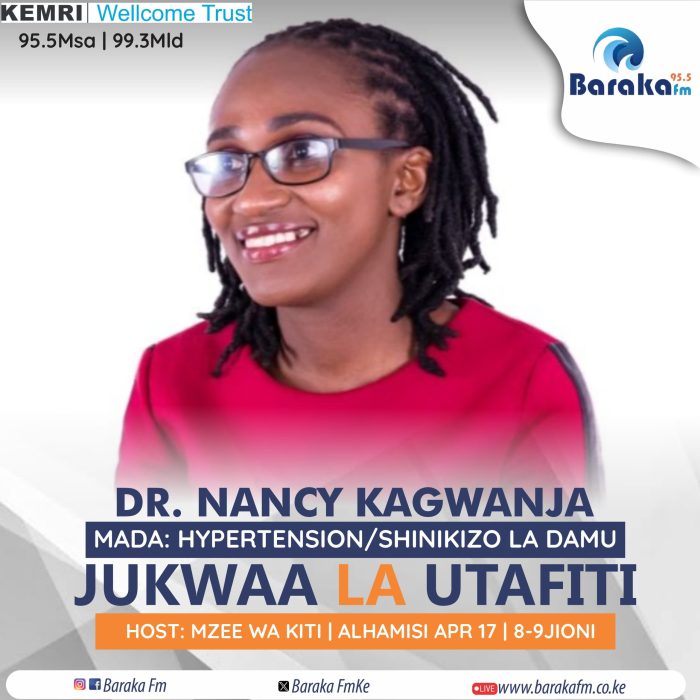High blood pressure, or hypertension, occurs when the force of blood pushing against the walls of arteries is consistently too high. It is defined by a reading of 130/80 mmHg or higher.
This medical condition is increasingly common in Kenya. A 2020 study revealed that nearly 3 in every 10 adults in Kenya have hypertension, with a rising incidence among young people.
Several factors contribute to the condition, including lifestyle choices, diet, genetics, age, and environmental influences. Speaking to Baraka FM, Dr. Nancy Kagwanja, a researcher at KEMRI’s Wellcome Trust in Kilifi, explained that there are two main types of hypertension: primary and secondary.
Primary Hypertension
Dr. Nancy describes primary hypertension as the most common form of the condition. Its exact cause is unknown, but several modifiable risk factors are linked to it.
“This type is influenced by factors such as stress, smoking, excessive alcohol consumption, and poor diet,” she said. “Environmental pollution also plays a role. Inhaling certain pollutants can damage arterial walls, making it harder for blood to flow and increasing pressure.”
She emphasized that these risk factors can be managed by making lifestyle changes, such as improving diet and quitting smoking. If left untreated, primary hypertension can lead to complications involving the heart, eyes, arteries, and kidneys.
Secondary Hypertension
Secondary hypertension is caused by an underlying health issue.
“You could have a kidney condition, and since kidneys help regulate blood pressure, that could trigger hypertension,” Dr. Nancy explained. “Thyroid disease and pregnancy can also cause temporary high blood pressure. In pregnant women, blood pressure often returns to normal after delivery.”

Diagnosis and Treatment
Dr. Nancy noted that hypertension often presents no symptoms. Many people are only diagnosed after experiencing serious signs such as severe headaches, blurred vision, or even collapsing.
“In places like Kilifi, people often find out they have hypertension only after seeking care for such symptoms,” she said.
Diagnosis begins at a health facility and may involve additional tests to determine the best course of treatment. Management typically starts with lifestyle changes. If blood pressure exceeds 140/90 mmHg, Ministry of Health guidelines recommend initiating medication due to the increased risk of heart disease.
“Patients are advised to reduce salt intake, quit smoking, limit alcohol, and adopt a healthier diet,” she said. “If medication is needed, most patients require at least two different drugs and regular clinic visits.”
Ongoing Research and Community Solutions
KEMRI-Wellcome Trust in Kilifi is involved in a collaborative study with The Gambia titled Improving Hypertension Control in Rural Sub-Saharan Africa (ICHOR). The project aims to bring diagnosis and treatment closer to communities.
According to Dr. Susan from the research team, the initiative explores the role of trained community health workers in diagnosing hypertension and administering a new combined pill to reduce the pill burden on patients. Feedback from patients will help determine the effectiveness and accessibility of this approach.
A related study in Old Town, Mombasa, found that only 23.2% of participants understood both the causes and management of hypertension. Dr. Nancy’s insights and recent studies highlight the low awareness, treatment, and control rates of hypertension in Kenya.
However, efforts by KEMRI-Wellcome Trust and other stakeholders offer hope and direction for improved community health and hypertension control.
Comments
comments